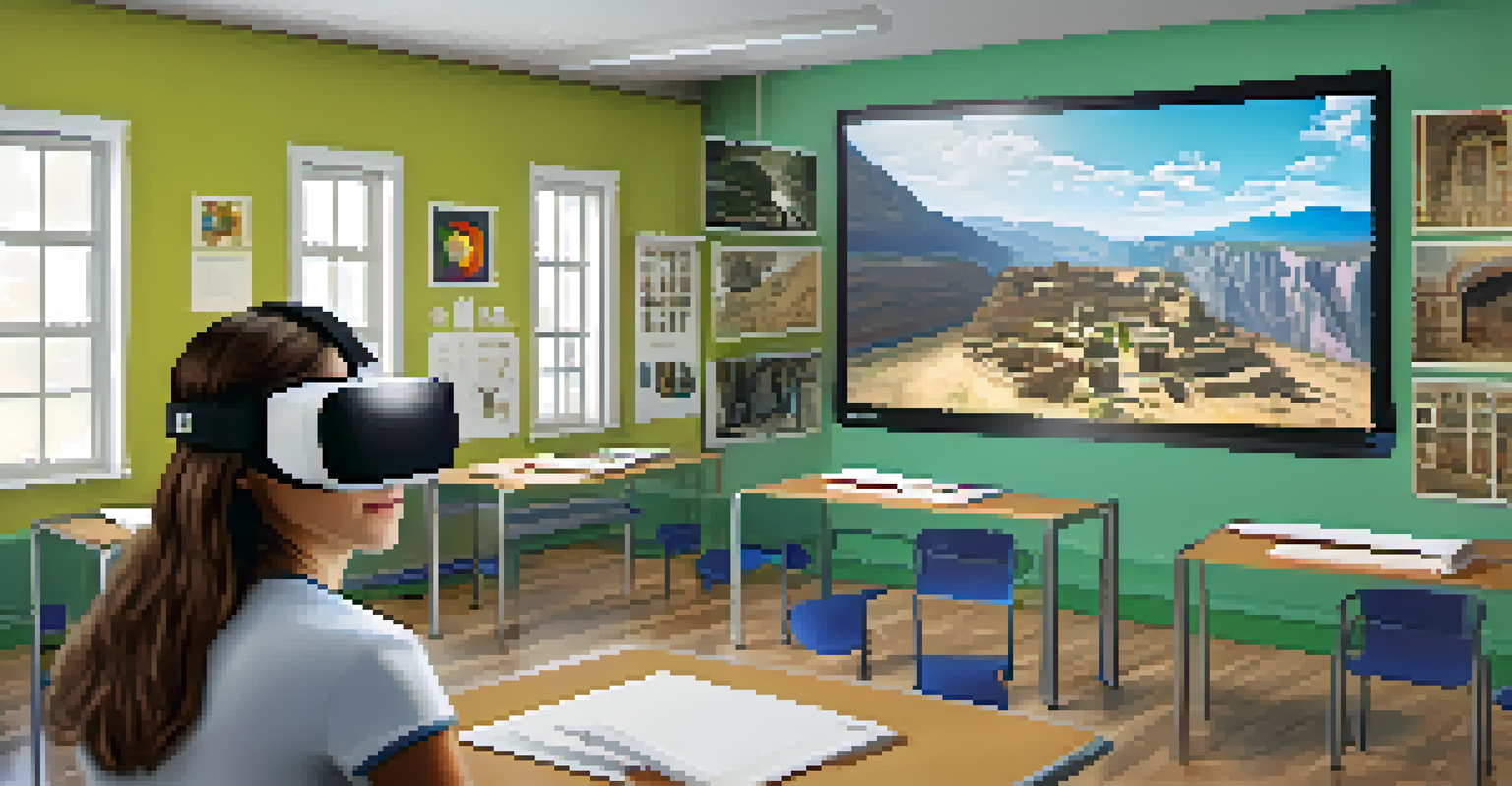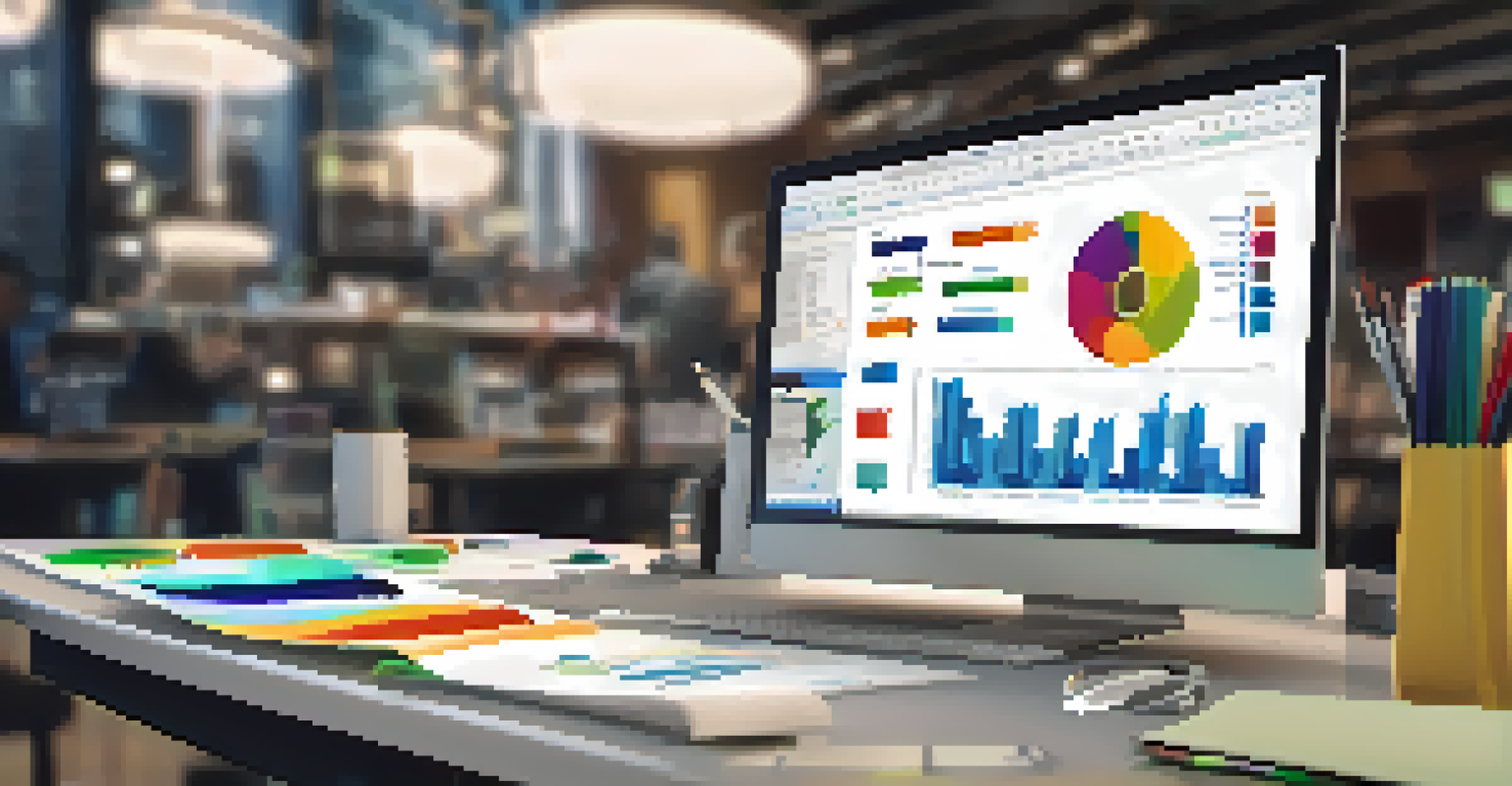Using Multimedia to Enrich Learning Experience Design

Understanding the Role of Multimedia in Learning
Multimedia encompasses various formats like text, images, audio, and video, all working harmoniously to enhance learning. By combining these elements, educators can cater to different learning styles, making the material accessible to a broader audience. For instance, a complex topic like photosynthesis can be explained through animations, diagrams, and descriptive texts, helping learners grasp the concept more effectively.
Multimedia is not just a collection of media; it is an integrated method of learning that adapts to different styles and needs.
Using multimedia tools can also stimulate interest and engagement. For example, incorporating videos can bring abstract theories to life, allowing students to visualize processes that would otherwise seem dull or too complex. This dynamic approach not only captures attention but also encourages active participation, leading to deeper understanding.
Moreover, the use of multimedia fosters collaboration among learners. Tools like digital presentations or interactive quizzes allow students to work together, sharing ideas and insights. This collaborative environment not only reinforces learning but also builds essential teamwork skills that are invaluable in today's world.
Types of Multimedia to Enhance Learning
There are several types of multimedia that educators can use to enrich the learning experience. Text is the foundation, but when combined with images, graphs, and charts, it creates a more comprehensive understanding of the content. For example, a history lesson can be significantly enhanced with photographs or primary source documents, providing context and depth.

Audio elements, such as podcasts or recorded lectures, can also play a crucial role. They allow learners to absorb information in a different format and can be particularly beneficial for auditory learners. Imagine a student listening to a podcast about a scientific discovery while commuting; this flexibility helps reinforce learning outside traditional settings.
Multimedia Enhances Learning Styles
By integrating various formats like text, audio, and video, educators can cater to diverse learning preferences and engage a broader audience.
Lastly, interactive multimedia, including simulations and educational games, can transform the learning experience into an engaging adventure. For instance, a virtual lab allows students to conduct experiments safely and affordably, offering hands-on experience that reinforces theoretical knowledge. This type of learning is not only effective but also memorable.
Benefits of Multimedia in Learning Experience Design
The integration of multimedia into learning experience design offers numerous benefits. First and foremost, it caters to diverse learning preferences. Visual learners benefit from diagrams and videos, while auditory learners thrive on discussions and audio materials. This personalized approach ensures everyone can engage with the content in a way that resonates with them.
The future belongs to those who prepare for it today.
Additionally, multimedia can enhance retention rates. Studies show that when information is presented through multiple channels, learners are more likely to remember it. For example, a student who watches a video explanation and then discusses it with peers is utilizing multiple senses, reinforcing their understanding and memory of the topic.
Finally, multimedia encourages creativity and critical thinking. By using various formats, students are often prompted to think outside the box, exploring different perspectives. For instance, creating a video project requires them to synthesize information creatively while also developing technical skills, which are crucial in today’s digital landscape.
Designing Multimedia Content for Maximum Impact
When designing multimedia content, clarity should be the top priority. Each element must serve a purpose; clutter can overwhelm learners and detract from the core message. For example, a presentation with too many animations can distract from the main points, while a clean and simple layout can enhance focus and comprehension.
Additionally, it's essential to consider accessibility. Ensuring that multimedia content is accessible to all learners, including those with disabilities, is crucial. This might involve providing captions for videos or alternative text for images, making sure everyone can engage with the material fully.
Collaboration Boosts Learning
Multimedia tools, such as interactive quizzes and digital presentations, foster collaboration among students, enhancing both understanding and teamwork skills.
Lastly, alignment with learning objectives is key. Every piece of multimedia should support the intended outcomes of the lesson. For instance, if the goal is to enhance problem-solving skills, incorporating interactive quizzes that challenge students to apply concepts can be far more effective than passive video watching.
Challenges of Integrating Multimedia in Learning
While the benefits of multimedia in learning are substantial, there are challenges to consider. One significant hurdle is the technical skills required to create and use multimedia effectively. Not all educators may feel comfortable with technology, which can lead to frustration and underutilization of valuable resources.
Furthermore, access to technology can be a barrier for some students, particularly those from disadvantaged backgrounds. If a student cannot access the internet or a device, they may miss out on essential learning opportunities. Addressing this digital divide is crucial to ensure that multimedia tools can benefit all learners equally.
Lastly, there’s the risk of overwhelming students with too much multimedia content. If not carefully curated, an abundance of resources can lead to confusion rather than clarity. It's important for educators to balance multimedia use with traditional methods, focusing on quality over quantity to maximize learning outcomes.
Future Trends in Multimedia Learning Experience Design
Looking ahead, the future of multimedia in learning experience design is exciting. Advancements in technology, such as virtual reality (VR) and augmented reality (AR), are poised to revolutionize the educational landscape. Imagine students exploring historical sites through VR or using AR to visualize complex scientific concepts in real-time – the possibilities are endless.
Moreover, artificial intelligence (AI) is beginning to play a role in personalizing learning experiences. AI can analyze student performance and adapt multimedia content to meet individual needs, ensuring that each learner receives tailored support. This level of personalization could significantly enhance engagement and retention.
Future Trends in Education Tech
Emerging technologies like VR, AR, and AI are set to personalize and enrich the learning experience, making education more engaging and effective.
Finally, the rise of online and hybrid learning models will continue to push the boundaries of multimedia use. As more institutions embrace blended learning, the need for high-quality, engaging multimedia content will only grow. Educators who adapt to these changes will be better equipped to meet the evolving needs of their students.
Conclusion: Embracing Multimedia for Enhanced Learning
In conclusion, integrating multimedia into learning experience design is not just a trend; it's a necessity in today’s educational landscape. By embracing various formats and technologies, educators can create more engaging, effective, and inclusive learning environments. This not only enriches the educational experience but also prepares students for a world that increasingly relies on multimedia communication.
As we move forward, it's important for educators to continue exploring and experimenting with multimedia tools. The key is to find the right balance that enhances learning without overwhelming students. By prioritizing clarity, accessibility, and alignment with learning objectives, educators can harness the full potential of multimedia.

Ultimately, the goal is to foster a love for learning that extends beyond the classroom. By using multimedia effectively, we can inspire students to engage with the material, think critically, and collaborate with their peers, setting them up for success in their future endeavors.